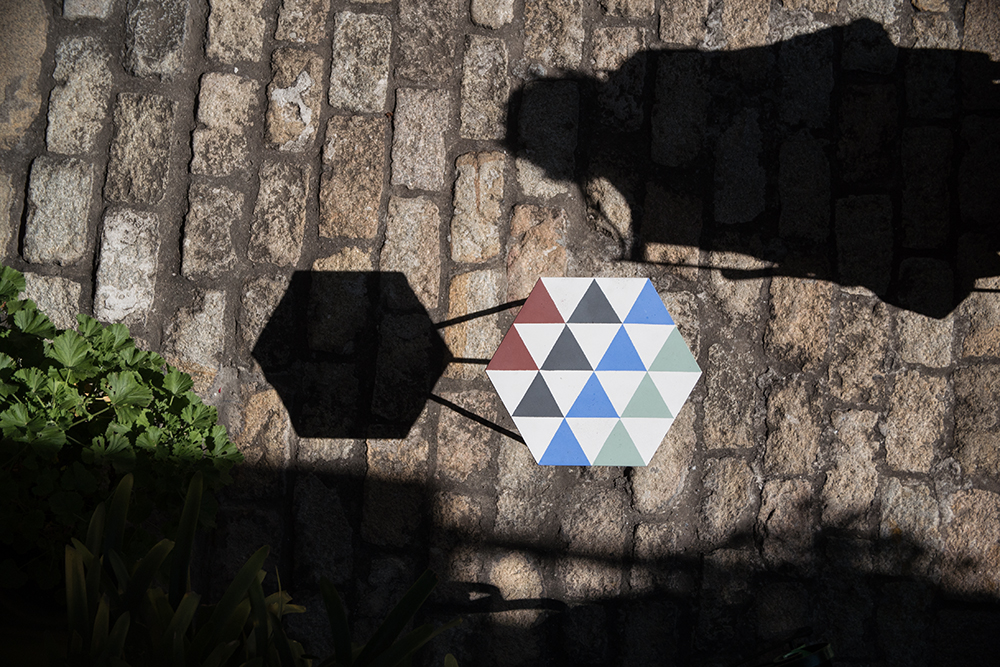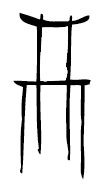riad table
2015
«During a visit in Marrakesh in 2014 we run across in a workshop of cement tiles;
we’ve been fascinated by the manufacturing process and by the strong visual
expressiveness of this product so common in our houses».
The cement tile was born in the Mediterranean Europe at the beginning of the 20th century as the industrialized evolution of the old mosaic or marble aggregate floor. Nowadays, because of the high manual commitment and because of the high costs of the labour in Europe, its production has basically moved to Morocco.
Riad table is an enhancement of the traditional manufacturing process and graphic motifs of hydraulic tiles. These concrete tiles emerged in Mediterranean Europe in the early 20th century as an industrial response to old mosaic floors. The drawings of Riad are inspired by traditional designs that can be found from the Alhambra of Granada to the Great Mosque of Damascus.
The idea behind this product is to decontextualise a construction material –the hydraulic tile– by isolating and objectifying it.
Great part of the design process lies in resolving what is not visible to the naked eye. Therefore it has been necessary to research more technical materials to lighten, reinforce and resize the product, as well as to intervene in its traditional manufacturing process in order to accurately place a metalic piece which works as a node to reinforce the object and, at the same time, to position the legs in perfect geometry.
The result is a table for indoors and outdoor whose hexagonal shape offers the possibilty to reproduce a “raised floor” combining as many pieces as desired.
The cement tile was born in the Mediterranean Europe at the beginning of the 20th century as the industrialized evolution of the old mosaic or marble aggregate floor. Nowadays, because of the high manual commitment and because of the high costs of the labour in Europe, its production has basically moved to Morocco.
Riad table is an enhancement of the traditional manufacturing process and graphic motifs of hydraulic tiles. These concrete tiles emerged in Mediterranean Europe in the early 20th century as an industrial response to old mosaic floors. The drawings of Riad are inspired by traditional designs that can be found from the Alhambra of Granada to the Great Mosque of Damascus.
The idea behind this product is to decontextualise a construction material –the hydraulic tile– by isolating and objectifying it.
Great part of the design process lies in resolving what is not visible to the naked eye. Therefore it has been necessary to research more technical materials to lighten, reinforce and resize the product, as well as to intervene in its traditional manufacturing process in order to accurately place a metalic piece which works as a node to reinforce the object and, at the same time, to position the legs in perfect geometry.
The result is a table for indoors and outdoor whose hexagonal shape offers the possibilty to reproduce a “raised floor” combining as many pieces as desired.




process pictures













